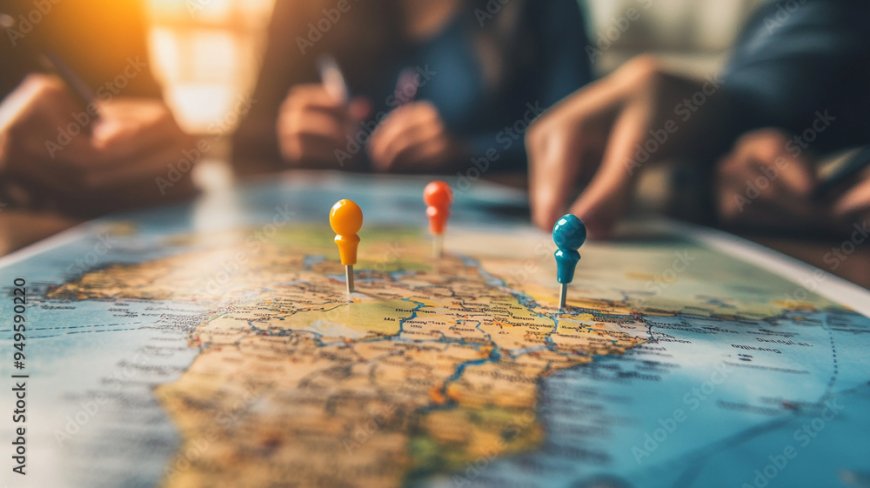Beyond the Bucket List: Why Experiential & Slow Travel is the Future of Tourism
Slow and experiential travel is the future of tourism. Discover how to travel deeply, immerse in cultures, and make meaningful connections.

Travel has evolved. It’s no longer just about snapping photos at famous landmarks or ticking destinations off a bucket list. In 2025, a new wave of travelers is embracing experiential and slow travel—a movement that prioritizes deep cultural immersion, meaningful connections, and a mindful pace over rushed itineraries.
Instead of cramming multiple cities into a single trip, more people are choosing to stay longer, travel deeper, and experience places like a local. But why is this shift happening, and how can you incorporate it into your next adventure? Let’s dive into the world of slow and experiential travel.
What is Experiential & Slow Travel?
Experiential travel is all about engaging with a destination on a deeper level—learning new skills, participating in local traditions, and forming genuine connections with the people and culture. Instead of being a passive tourist, you become an active participant in your journey.
Slow travel, on the other hand, is a mindset that encourages travelers to move at a relaxed pace, savoring the journey rather than rushing from one attraction to another. It’s about quality over quantity, choosing to explore fewer places but in a more immersive and intentional way.
At its core, these two travel styles focus on:
✔ Authenticity – Traveling like a local rather than a tourist.
✔ Sustainability – Reducing your environmental footprint.
✔ Cultural Exchange – Learning from the communities you visit.
✔ Personal Growth – Returning home with more than just souvenirs.
Why is Slow and Experiential Travel Trending?
This shift in travel habits is driven by several factors:
1. The Desire for Deeper Experiences
After years of fast-paced, checklist-style vacations, many travelers are seeking more meaningful connections with the places they visit. Instead of just seeing the world, they want to feel it, understand it, and be a part of it.
2. The Rise of Work-From-Anywhere Culture
With remote work becoming the norm, people no longer need to limit their travels to short vacations. Many are embracing digital nomadism, living in new countries for weeks or months rather than just visiting for a few days.
3. Sustainability & Responsible Tourism
Fast travel often means excessive carbon footprints, over-tourism, and environmental strain. Slow travel, on the other hand, emphasizes eco-friendly practices—using public transport, staying in locally-owned accommodations, and supporting small businesses.
4. Escaping Burnout & Overstimulation
Many travelers are tired of exhausting itineraries and overcrowded tourist hotspots. Slow travel offers an antidote, allowing people to reconnect with themselves and their surroundings in a more mindful way.
How to Embrace Slow & Experiential Travel
Ready to ditch the rush and travel more intentionally? Here’s how you can make the switch:
1. Choose One Destination & Stay Longer
Instead of hopping between multiple cities in a week, pick one or two places and stay for an extended period. This allows you to:
- Settle into a rhythm and live like a local.
- Discover hidden gems that most tourists miss.
- Build genuine relationships with people you meet.
2. Opt for Local Accommodations
Skip the generic hotel chains and try:
???? Homestays & Guesthouses – Stay with locals for an authentic experience.
????️ Eco-Lodges – Choose sustainable accommodations in nature.
????️ Long-Term Rentals – Live like a resident rather than a tourist.
3. Travel by Train, Bus, or Bike
Flying between cities is quick but disconnects you from the journey. Instead, try:
???? Train travel – Enjoy scenic routes and reduce carbon emissions.
???? Biking tours – Explore cities and countryside at a relaxed pace.
???? Public transportation – Experience daily life as locals do.
4. Engage with the Culture
- Take a local cooking class – Learn traditional recipes and dine with a local family.
- Join a community project – Volunteer for a cause that supports the local community.
- Attend cultural festivals – Immerse yourself in music, dance, and traditions.
- Learn the language – Even a few basic phrases can open doors to deeper interactions.
5. Eat Like a Local
Forget touristy restaurants—go where the locals eat!
- Visit street food markets and family-run cafes.
- Try farm-to-table experiences in rural areas.
- Ask locals for their favorite hidden spots.
6. Disconnect from Technology
Slow travel is about being present. Limit your phone use, take fewer photos, and spend more time soaking in the moment rather than documenting everything for social media.
The Best Destinations for Slow & Experiential Travel
???? Europe’s Hidden Villages
- Tuscany, Italy – Stay in a vineyard, take pasta-making classes, and bike through the countryside.
- Provence, France – Wander through lavender fields, visit local markets, and enjoy slow afternoons in a village cafe.
????️ Southeast Asia’s Remote Escapes
- Luang Prabang, Laos – Wake up to sunrise almsgiving, explore waterfalls, and learn about Buddhist culture.
- Ubud, Bali – Immerse in yoga, art, and organic farm life.
????️ South America’s Nature Retreats
- Patagonia, Chile – Trek through stunning landscapes at your own pace.
- Colombia’s Coffee Region – Stay on a coffee farm and learn about the entire bean-to-cup process.
????️ Africa’s Untouched Wilderness
- Namibia – Experience desert solitude and wildlife conservation programs.
- Zanzibar, Tanzania – Live in a coastal village, explore spice farms, and enjoy slow island life.
Final Thoughts: Travel Slowly, Experience Deeply
In a world that moves at lightning speed, slow and experiential travel is a refreshing way to reconnect with ourselves and the world around us. Instead of checking off landmarks, we can form meaningful connections, appreciate local cultures, and truly embrace the art of travel.
So next time you plan a trip, ask yourself:
???? Do I want to see more, or experience more?
Because the best journeys aren’t measured by the number of places visited, but by the depth of experiences lived.
What's Your Reaction?
 Like
0
Like
0
 Dislike
0
Dislike
0
 Love
0
Love
0
 Funny
0
Funny
0
 Angry
0
Angry
0
 Sad
0
Sad
0
 Wow
0
Wow
0



















































